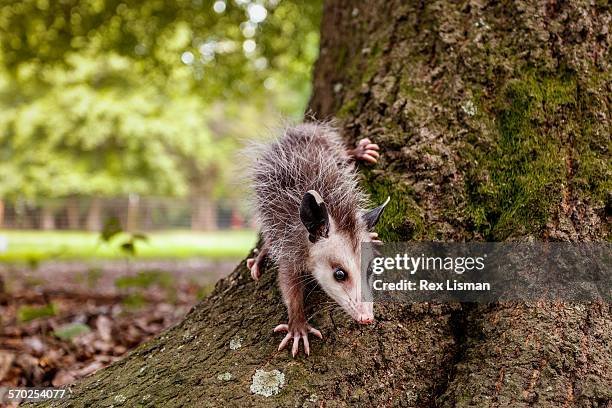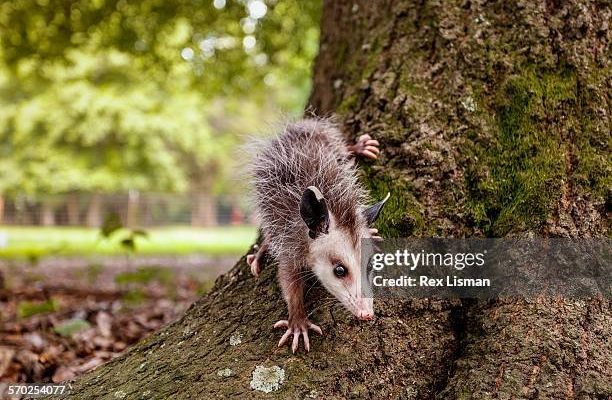
Let’s dive into the world of opossums, exploring not just their current status but the bigger picture of global conservation efforts. We’ll look at their habits, their role in the ecosystem, and the challenges they face. Whether you’re a nature lover or just curious about wildlife, understanding the plight of the opossum gives us a window into the larger conversation about conservation.
What Makes Opossums Unique?
Opossums are fascinating creatures. Standing out with their gray fur and long, scaly tails, they’re often misunderstood. Some folks see them as pests, while others recognize their unique place in our environment. They’re nocturnal, which means they do most of their foraging when the sun goes down. You might spot one cautiously rummaging through your compost or scurrying across the road.
One of the most interesting traits of opossums is their ability to “play dead.” When threatened, they can go limp, mimicking death. This behavior can confuse predators, giving the opossum a chance to escape. Here’s the thing: it’s a survival tactic that reflects their adaptability. They’re quite the survivors, possessing a remarkable resilience that many other species envy.
Their role in the ecosystem is vital. Opossums are nature’s cleanup crew, feeding on ticks, garbage, and pests that can harm plants and animals. By controlling pest populations, they help maintain a balanced ecosystem, showing us that even the most misunderstood creatures have a significant impact.
Current Status of Opossum Populations
So, where do opossums stand in terms of population? Thankfully, most opossum species are not endangered. The Virginia opossum, the most common species in North America, is classified as least concern by the International Union for Conservation of Nature (IUCN). This means their populations are stable, and they’re adapting well to urban environments.
However, just because they’re not endangered doesn’t mean there aren’t challenges. Habitat loss due to urbanization, deforestation, and climate change does put pressure on their populations. Opossums that once thrived in wooded areas now find their homes shrinking, leading to potential conflicts with humans.
In some regions, local populations may face threats from road mortality, with many opossums being hit by cars while trying to cross roads. It’s a real concern that contributes to local declines, even if the species as a whole remains stable.
Global Conservation Efforts for Opossums
While many opossums thrive, the reality is that conservation efforts are crucial. Various organizations are stepping up to study opossum behavior and habitat needs. These initiatives are vital for ensuring that, even as things change globally, these marsupials can continue to survive and thrive.
One example of these conservation efforts is habitat restoration projects. By planting native vegetation and protecting natural areas, conservationists encourage the growth of the ecosystems that opossums depend on. This not only helps opossums but also many other species sharing their habitat.
Education also plays a significant role. Teaching communities about the importance of opossums in controlling ticks and pests can lead to more compassionate attitudes toward these animals. By fostering appreciation and understanding, we can help reduce the stigma surrounding them and create a more welcoming environment.
Threats to Opossum Survival
Despite their resilient nature, opossums face several threats. Habitat destruction is perhaps the most significant. As humans develop land for housing and agriculture, the natural spaces opossums rely on for food and shelter are disappearing. This loss not only affects their ability to thrive but can also lead to more encounters with humans—often with unfortunate results.
Another threat is road fatalities. As mentioned, opossums are common victims of car accidents, especially in suburban or rural areas. Their nocturnal habits increase their risk, as they are active at night when visibility is low. Efforts like wildlife crossings or signage to alert drivers to wildlife can help mitigate this problem.
Lastly, disease can pose a threat. Opossums have a unique immune system that makes them resistant to some diseases. Still, they can carry parasites or other illnesses that may affect other wildlife or domestic animals. Understanding these dynamics is essential for wildlife management and public health.
The Role of Opossums in Climate Change Awareness
You might not think about opossums and climate change in the same breath, but their presence can offer insights. As climate patterns shift, so do the habitats of many animals, including opossums. They are adaptable, which means they may migrate or alter their behaviors based on changing conditions. This adaptability can serve as a barometer for the health of the ecosystems they inhabit.
Monitoring opossum populations can provide valuable data on how other species may react to climate change. For example, if opossums start to decline, it could signal a broader problem in the ecosystem. This information is crucial for researchers and conservationists working to mitigate climate impacts on wildlife.
As conversations around climate change grow, recognizing the interconnectedness of species becomes even more vital. Opossums, with their unique traits and roles, remind us that every small creature contributes to the health of our planet.
How Can You Help Opossums?
Want to get involved in helping opossums? Here are some simple yet effective ways:
- Educate Yourself and Others: Understanding the value of opossums in our ecosystem is the first step. Share this knowledge with friends and family to help reduce misconceptions.
- Support Local Wildlife Organizations: Many organizations focus on habitat restoration and wildlife conservation. Donating or volunteering can make a difference.
- Create Safe Spaces: If you have a yard, consider planting native plants and providing shelter. This will create a welcoming environment for opossums and other wildlife.
- Drive Carefully: Be mindful when driving in areas known for wildlife. Slowing down can save lives—yours and theirs!
Opossums may not be endangered, but they face many challenges that require our attention. Understanding their unique role in the ecosystem can help foster a greater appreciation for these fascinating creatures. As we look towards the future, the key is recognizing that every action—big or small—can contribute to the survival of opossums and countless other species.
By educating ourselves, supporting conservation efforts, and changing our attitudes, we can ensure that opossums continue to thrive in the wild. So next time you see an opossum, remember their incredible journey and think about how you can help their story continue. After all, every little bit counts in the quest for a balanced and healthy ecosystem.

